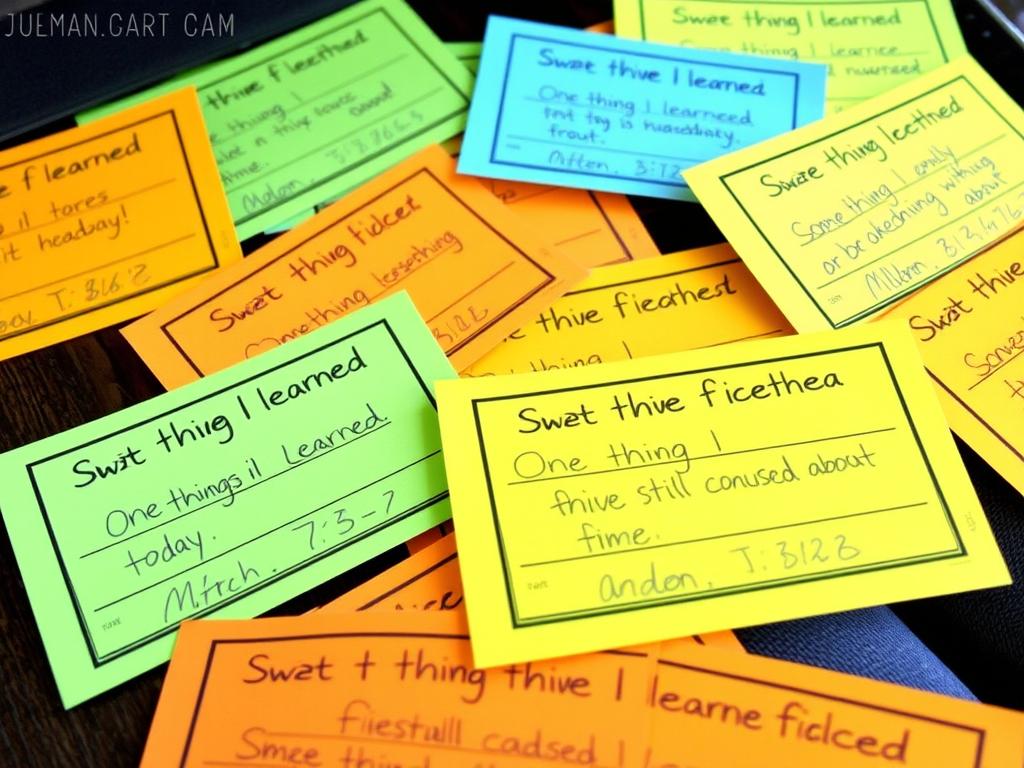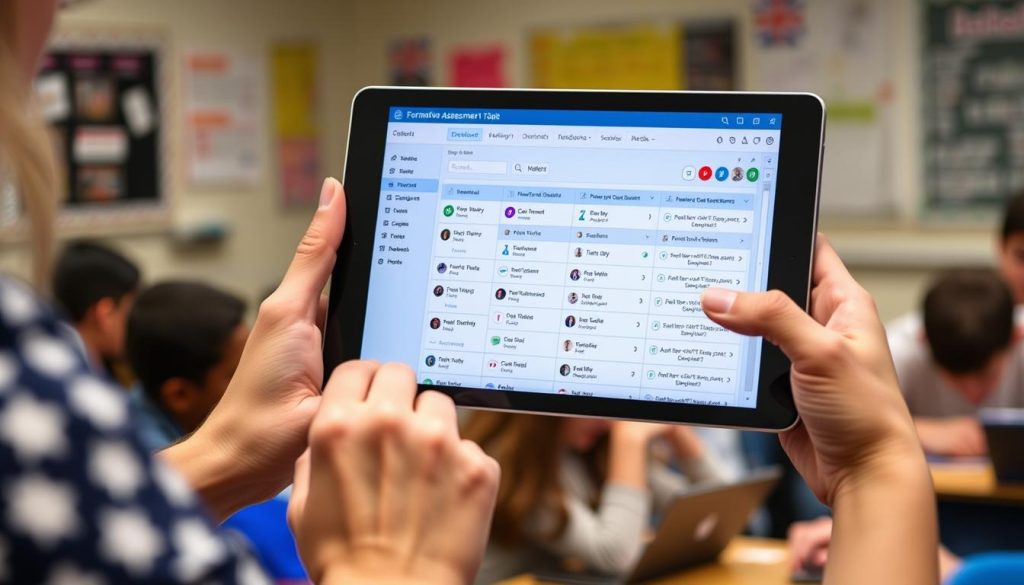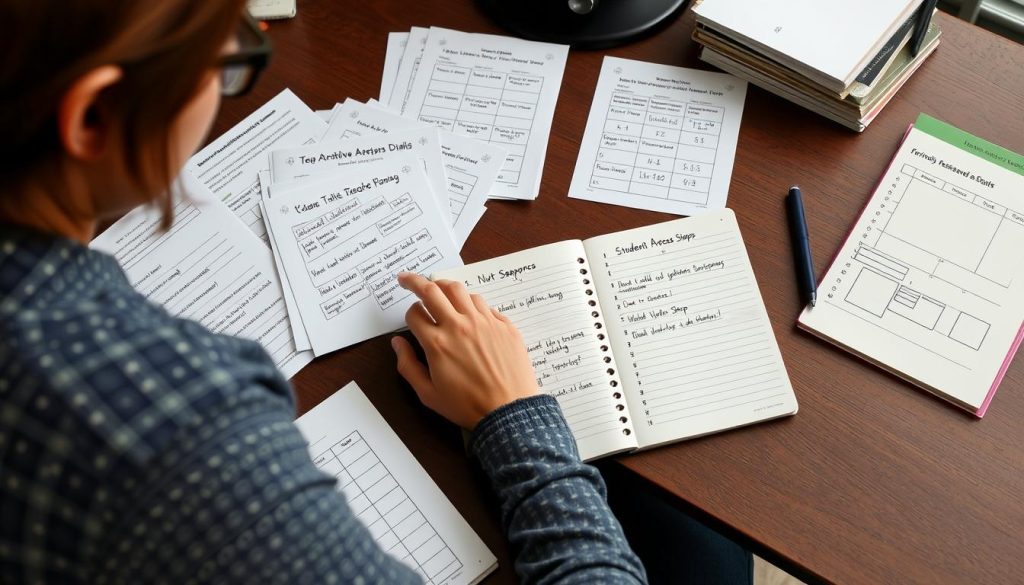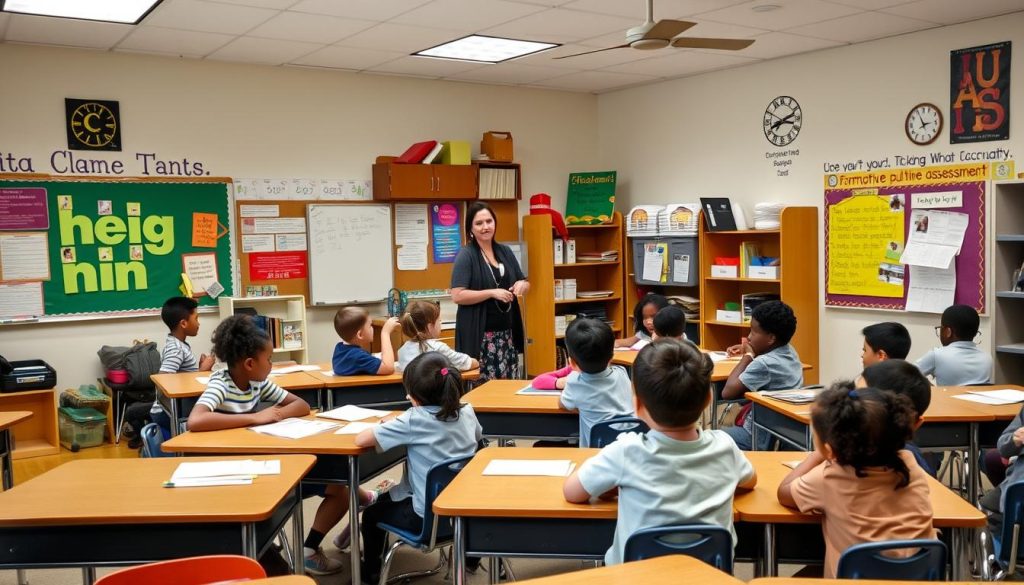What Is Formative Assessment and Why It Matters
Formative assessment isn’t just another educational buzzword—it’s a powerful approach that transforms how we understand student learning. Unlike summative assessments (think final exams or end-of-unit tests), formative assessment happens during the learning process, not after it’s complete.
Think of it this way: if summative assessment is the autopsy, formative assessment is the check-up. One tells you why the patient died; the other helps keep them healthy. Formative assessment provides the ongoing feedback both teachers and students need to make learning more effective.
Formative assessment allows teachers to provide timely feedback during the learning process
Research from Edutopia shows that regular formative assessment can increase student achievement significantly. When teachers develop their teacher skills in this area, they create a responsive classroom environment where adjustments happen in real-time, not after it’s too late to help.
The core benefits of formative assessment include:
- Identifying student misconceptions before they become ingrained
- Providing timely feedback when it matters most
- Allowing teachers to adjust instruction based on evidence
- Helping students become more aware of their own learning
- Creating a culture of continuous improvement
Developing strong teacher skills in formative assessment doesn’t happen overnight, but the investment pays enormous dividends in student learning and engagement.
Formative Assessment vs. Summative Assessment: Understanding the Difference
To fully grasp the power of formative assessment, it helps to understand how it differs from its counterpart, summative assessment. Both have important roles in education, but they serve fundamentally different purposes.
| Characteristic | Formative Assessment | Summative Assessment |
| Timing | During the learning process | After the learning process |
| Purpose | To monitor and improve learning | To evaluate learning achievement |
| Stakes | Low-stakes or no-stakes | High-stakes (affects grades) |
| Feedback | Immediate and specific | Delayed and general |
| Examples | Exit tickets, think-pair-share, quick polls | Final exams, standardized tests, term papers |
As assessment expert Paul Black puts it, “When the cook tastes the soup, that’s formative assessment. When the customer tastes the soup, that’s summative assessment.” This simple analogy captures the essence of the difference—one is about improving the process, the other about judging the final product.
Effective teacher skills include knowing when and how to use both types of assessment. While summative assessments have their place in measuring overall achievement, formative assessment is what drives day-to-day improvement in your classroom.
10 Quick Formative Assessment Strategies You Can Use Tomorrow
One of the best things about formative assessment is that it doesn’t require elaborate preparation or expensive materials. Here are ten strategies you can implement immediately to enhance your teacher skills and get better insights into student learning:

Exit tickets provide quick insights into student understanding at the end of a lesson
- Exit Tickets: In the last five minutes of class, ask students to respond to a prompt about the day’s learning. Questions like “What was the most important thing you learned today?” or “What question do you still have?” provide immediate feedback.
- Think-Pair-Share: Pose a question, give students time to think individually, then have them discuss with a partner before sharing with the class. This builds in processing time and lets you hear multiple perspectives.
- Thumbs Up/Down/Sideways: A quick visual check for understanding. Thumbs up means “I understand,” thumbs sideways means “I’m not sure,” and thumbs down means “I’m confused.”
- 3-2-1: Have students write down 3 things they learned, 2 things they found interesting, and 1 question they still have. This provides a quick snapshot of what resonated and what needs clarification.
- One-Minute Paper: Ask students to take one minute to write about the most important concept from the lesson or to answer a specific question about the content.
- Four Corners: Label the corners of your room with different responses (Strongly Agree, Agree, Disagree, Strongly Disagree). Read a statement and have students move to the corner that represents their thinking.
- Misconception Check: Present students with a common misconception about the content and ask them to explain why it’s incorrect.
- Whiteboard Responses: Have students write answers on individual whiteboards and hold them up. This gives you a quick visual of everyone’s thinking at once.
- Traffic Light Cards: Students use red, yellow, or green cards to indicate their level of understanding (red = confused, yellow = partially understand, green = confident).
- Self-Assessment: Have students rate their own understanding of a concept on a scale of 1-5, then explain their rating.
These strategies require minimal preparation but yield valuable insights. The key to developing your teacher skills in formative assessment is consistency—make these practices a regular part of your teaching routine.
Enhance Your Formative Assessment Skills
Looking to master these strategies and more? Our professional development courses at Credits for Teachers help you build essential teacher skills that make immediate impacts in your classroom.
Digital Tools That Enhance Formative Assessment Practices
In today’s connected classrooms, technology offers powerful ways to streamline formative assessment and gather insights more efficiently. These digital tools can help you develop your teacher skills while making assessment more engaging for students:

Digital tools allow teachers to collect and analyze formative assessment data in real-time
Polling and Quiz Tools
- Kahoot! – Game-based learning platform that makes formative assessment fun
- Quizizz – Self-paced quizzes with instant feedback
- Poll Everywhere – Live polling that works with any device
Interactive Response Tools
- Nearpod – Interactive lessons with embedded assessments
- Pear Deck – Adds interactive questions to presentations
- Mentimeter – Creates word clouds and visual representations of student responses
Feedback Platforms
- Flipgrid – Video responses that show student thinking
- Seesaw – Digital portfolios with teacher feedback options
- Padlet – Virtual bulletin boards for sharing ideas
Assessment Management
- Formative – Real-time monitoring of student work
- Edulastic – Standards-aligned assessments with instant data
- Socrative – Quick checks for understanding
Remember that the technology itself isn’t what matters—it’s how you use it to gather meaningful information about student learning. The best digital tools for formative assessment should be:
- Easy for both you and your students to use
- Quick to implement without disrupting the flow of learning
- Capable of providing actionable data
- Engaging for students
Developing your teacher skills with these digital tools takes some initial investment of time, but the payoff in efficiency and insight is substantial. Start with one tool that addresses a specific need in your classroom, master it, and then gradually expand your digital toolkit.
Looking to develop your teacher skills with technology integration? Professional development opportunities can help you master these tools more quickly.
Implementing Formative Assessment: A Step-by-Step Approach
Knowing about formative assessment strategies is one thing—implementing them effectively is another. Here’s a practical framework to help you develop your teacher skills in this area:
Planning your formative assessment approach helps ensure consistent implementation
1. Set Clear Learning Targets
Before you can assess learning, you need to know exactly what you’re looking for. Translate standards into student-friendly language so both you and your students understand the goal.
Example: Instead of “Students will understand photosynthesis,” try “I can explain how plants make their own food using sunlight, water, and carbon dioxide.”
2. Plan Your Assessment Strategy
Choose formative assessment techniques that align with your learning targets. Consider:
- What specific information do you need about student learning?
- When during the lesson will assessment be most valuable?
- How will you record and use the data you collect?
3. Prepare Students for the Process
Students need to understand that formative assessment is about improving learning, not judging performance. Explain:
- The purpose of the assessment
- How the information will be used
- That mistakes are valuable opportunities for learning
4. Gather Evidence
Implement your chosen assessment strategies, making sure to:
- Keep it brief and focused
- Ensure all students participate
- Capture the information efficiently
5. Interpret the Results
Look for patterns in student responses:
- What concepts are most students understanding?
- What misconceptions are emerging?
- Which students need additional support?
6. Adjust Instruction
This is where the real power of formative assessment lies. Based on what you’ve learned:
- Reteach concepts that many students are struggling with
- Provide targeted support for specific students
- Extend learning for students who have mastered the content
7. Provide Feedback
Share insights with students in ways that move learning forward:
- Be specific about what they’re doing well
- Offer clear guidance on next steps
- Encourage self-reflection
Developing your teacher skills in formative assessment is an ongoing process. Start small, focus on consistency, and gradually expand your repertoire of strategies as you become more comfortable with the approach.
Need more structured guidance on implementing formative assessment? Credits for Teachers offers professional development opportunities specifically designed for K-12 educators looking to enhance their assessment practices.
Involving Students in the Formative Assessment Process
Formative assessment isn’t something we do to students—it’s something we do with them. When students become active participants in the assessment process, they develop metacognitive skills that make them more independent learners.
Peer assessment helps students develop critical thinking skills while providing valuable feedback
Self-Assessment Strategies
Teaching students to assess their own learning is one of the most valuable teacher skills you can develop. Try these approaches:
- Learning Logs: Students regularly reflect on what they’re learning, what questions they have, and what strategies are working for them.
- Confidence Ratings: After completing a task, students rate their confidence in their answer and explain why.
- Traffic Light Self-Assessment: Students mark concepts green (understand well), yellow (partially understand), or red (don’t understand).
- Goal Setting: Students set specific learning goals and track their progress toward meeting them.
Peer Assessment Techniques
When students assess each other’s work, they deepen their own understanding while providing valuable feedback:
- Two Stars and a Wish: Students identify two strengths in a peer’s work and one area for improvement.
- Gallery Walks: Students post their work and provide structured feedback on their classmates’ work.
- Peer Questioning: Students develop questions about the content for their peers to answer.
- Structured Peer Review: Using simple rubrics, students provide feedback on specific aspects of their peers’ work.
Creating a Feedback-Rich Environment
For student involvement in formative assessment to be effective, the classroom culture needs to support it:
- Establish norms for giving and receiving feedback
- Model constructive feedback regularly
- Emphasize that mistakes are opportunities for learning
- Celebrate growth and improvement, not just achievement
- Make time for reflection and revision
When students become skilled at self and peer assessment, they take more ownership of their learning. They begin to ask themselves, “How am I doing?” and “What do I need to do next?” rather than waiting for the teacher to tell them.
Developing these teacher skills takes time and patience, but the long-term benefits for student independence and metacognition are tremendous.
Master Student-Centered Assessment Approaches
Our professional development courses at Credits for Teachers help you build the teacher skills needed to effectively involve students in the assessment process.
Using Formative Assessment Data to Drive Instruction
Collecting formative assessment data is just the beginning—the real impact comes from how you use that information to shape your teaching. Developing your teacher skills in data analysis and responsive instruction is essential for maximizing the benefits of formative assessment.

Analyzing formative assessment data helps teachers make informed instructional decisions
Organizing Assessment Data
To make sense of the information you gather, you need simple systems for tracking it:
- Class Spreadsheets: Create simple trackers for key concepts with color coding to quickly identify patterns.
- Individual Student Profiles: Maintain notes on each student’s progress toward learning targets.
- Digital Tools: Use apps that automatically compile student response data into visual formats.
- Concept Maps: Visually represent connections between concepts and student understanding.
Analyzing Patterns and Trends
Look for meaningful patterns in your assessment data:
- Whole-Class Patterns: Which concepts are most students struggling with?
- Small-Group Needs: Are there clusters of students with similar misconceptions?
- Individual Progress: How are specific students developing over time?
- Unexpected Results: What surprising insights has the assessment revealed?
Responsive Teaching Strategies
Once you’ve analyzed the data, you can respond with targeted instructional approaches:
When Many Students Are Struggling
- Reteach the concept using a different approach
- Break the concept into smaller, more manageable parts
- Use concrete examples or visual representations
- Connect to previously mastered concepts
When Some Students Need Support
- Form temporary small groups for targeted instruction
- Provide additional practice opportunities
- Use peer teaching with students who understand the concept
- Develop scaffolded materials for independent work
When Students Have Mastered Content
- Provide extension activities that deepen understanding
- Offer opportunities to apply concepts in new contexts
- Engage students as peer tutors
- Introduce related, more complex concepts
When Results Are Mixed
- Use station teaching to address different needs simultaneously
- Implement tiered assignments with varying levels of support
- Create flexible groupings based on specific needs
- Use technology to provide personalized learning paths
The key to developing your teacher skills in this area is maintaining a flexible mindset. Your lesson plans should be living documents that evolve based on what your formative assessment data tells you about student learning.
Remember that responding to assessment data doesn’t always mean dramatic changes to your teaching plan. Sometimes small adjustments—an additional example, a clarifying question, or five more minutes of practice—can make a significant difference in student understanding.
Want to develop advanced teacher skills in data-driven instruction? Credits for Teachers offers specialized courses in assessment data analysis and responsive teaching strategies.
Conclusion: Making Formative Assessment a Daily Practice
Formative assessment isn’t just another teaching strategy—it’s a fundamental shift in how we approach instruction. When woven into the fabric of daily classroom life, it transforms teaching from a one-way delivery of content into a responsive dialogue between teacher and students.

When formative assessment becomes routine, it creates a more responsive and effective learning environment
As you develop your teacher skills in formative assessment, remember these key principles:
- Start small. Begin with one or two strategies and use them consistently before adding more.
- Focus on purpose. Always be clear about what information you’re trying to gather and how you’ll use it.
- Involve students. Help them understand that assessment is a tool for learning, not just evaluation.
- Embrace flexibility. Be willing to adjust your teaching based on what the assessment reveals.
- Celebrate progress. Recognize growth and improvement, not just mastery.
The journey to becoming skilled at formative assessment is ongoing. Each classroom, each group of students, and each learning target presents new opportunities to refine your approach. The most effective teachers view formative assessment not as something extra they do, but as an essential lens through which they view all teaching and learning.
By making formative assessment a daily practice, you create a classroom environment where feedback flows continuously, adjustments happen naturally, and both you and your students are constantly growing. Your teacher skills will expand, your instruction will become more targeted, and most importantly, your students will learn more effectively.
Take Your Teacher Skills to the Next Level
Ready to deepen your expertise in formative assessment? Credits for Teachers offers professional development courses designed specifically for K-12 educators looking to enhance their assessment practices.




